 The last two figures of the root are found by division. The rule in such cases is, that two less than the number of figures already obtained may be found without error by division, the divisor to be employed being three times the square of the part of... The last two figures of the root are found by division. The rule in such cases is, that two less than the number of figures already obtained may be found without error by division, the divisor to be employed being three times the square of the part of...  Second Course in Algebra - Page 259by Webster Wells, Walter Wilson Hart - 1913 - 342 pagesFull view Second Course in Algebra - Page 259by Webster Wells, Walter Wilson Hart - 1913 - 342 pagesFull view - About this book
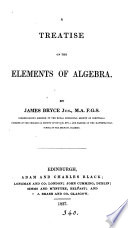 | James Bryce - Algebra - 1837 - 322 pages
...subtract its cube from the given quantity; 3* take the quotient of the first term of the remainder by three times the square of the part of the root already found, and set it down as the next term of the root: then, to the treble of the square of the first term of the... | |
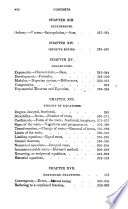 | Stephen Chase - Algebra - 1849 - 348 pages
...43200+1800+25 = 45025, 2d complete divisor. 225125~ NoTES. (1.) The terms of the power not being distinct, three times the square of the part of the root already found is only a trial er approximate (§ 174. N. 2) divisor, and the correctness of the next figure of the... | |
 | James William M'Gauley - 1854 - 284 pages
...the first term will be the first term of the root: subtract its cube from the given quantity. Divide three times the square of the part of the root already found, into the remainder : — the quotient will be the second term of the root. Subtract three times the... | |
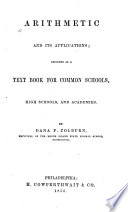 | Dana Pond Colburn - Arithmetic - 1855 - 396 pages
...period, and to the remainder bring down the next period, calling the result a dividend. Fourth. Find three times the square of the part of the root already found, and make it a trial divisor. Fifth. See how many times the trial divisor is contained in the dividend,... | |
 | Dana Pond Colburn - Arithmetic - 1856 - 392 pages
...period, and to the remainder bring down the next period, calling the result a dividend. Fourth. Find three times the square of the part of the root already found, and make it a trial divisor. Fifth. See how many times the trial divisor is contained in the dividend,... | |
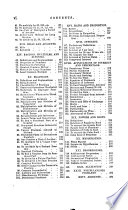 | Dana Pond Colburn - 1858 - 288 pages
...left-hand period, and to the remainder bring down the next period, calling the result a dividend. 4th. Find three times the square of the part of the root already found, and make it a TRIAL DIVISOR. 5th. See how many times the trial divisor is contained in the dividend, excepting... | |
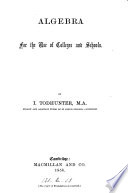 | Isaac Todhunter - Algebra - 1858 - 530 pages
...column, and add the last three lines in this column ; thus we obtain 12ж4 — 36cж' + 27cV, which is three times the square of the part of the root already found. Now divide the remainder in the third column by the expression just obtained, and we arrive at c' for... | |
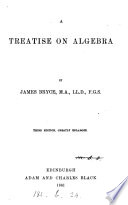 | James Bryce - 1861 - 376 pages
...divisors, the first Зa2, and the second, formed after two additions, За' + 6а6е + Зb2, each being three times the square of the part of the root already found ; the complete divisors being the quantities found after one addition to each of these ; the second... | |
 | Isaac Todhunter - Algebra - 1863 - 302 pages
...second column, and add the last three lines in this column ; thus we obtain 12ar'-36«*+27ic2, which is three times the square of the part of the root already found. Now divide the remainder in the third column by the expression just obtained, and we arrive at 4 for... | |
 | Benjamin Greenleaf - Algebra - 1864 - 420 pages
...term, icrite it as the first term of the root, and subtract its cube from the given polynomial. Take three times the square of the part of the root already found for the trial divisor, divide the first term of the remainder by it, and write the quotient for the... | |
| |